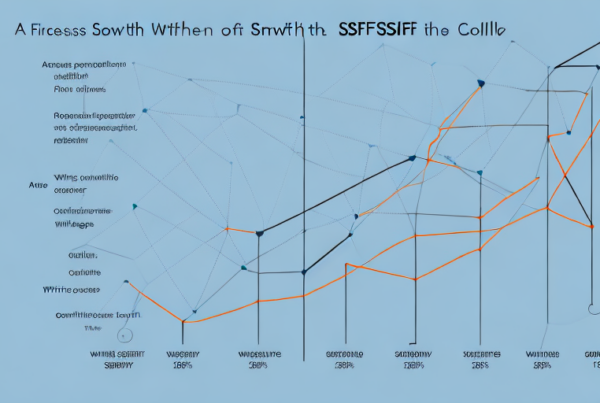Self-managed super funds (SMSFs) are increasingly popular as a means of taking control of one’s retirement funds. One of the features that sets them apart from traditional super funds is the ability to borrow funds to purchase property or other assets. However, SMSF borrowing comes with specific rules and regulations that must be carefully followed. In this article, we will provide an overview of SMSF borrowing, discuss changes to the rules and regulations in 2023, explore various SMSF borrowing strategies, and outline the compliance and auditing requirements that must be met.
Understanding SMSF Borrowing
Before we delve into the specifics of SMSF borrowing rules and regulations, it’s essential to understand what an SMSF is. Essentially, it is a superannuation fund where the members are also the trustees. This means that the members have a high degree of control over the fund’s investment decisions and the strategy they adopt. This level of control is appealing to many investors, allowing them to tailor their investment approach to their unique circumstances.
What is an SMSF?
As noted, an SMSF is a private super fund that is managed by its members. These members, who are also the trustees of the fund, carry the responsibility for investment strategy, compliance with the relevant laws, and any administration. SMSFs can have up to four members, and all members must be trustees or directors of the corporate trustee. This requirement ensures that every member has a say in the fund’s management and decision-making processes.
One of the key benefits of an SMSF is the flexibility it provides. SMSF members have the freedom to invest in a wide range of assets, including shares, property, and managed funds. This flexibility allows members to tailor their investments to their unique circumstances and investment goals. Additionally, SMSFs offer tax advantages, including the ability to claim tax deductions on contributions and tax-free investment earnings once members reach retirement age.
Basics of SMSF Borrowing
SMSF borrowing is an arrangement that allows trustees to borrow money to invest in various assets. The most common asset class that SMSFs borrow to acquire is property. The unique benefit of SMSF borrowing is that it enables trustees to invest in high-value assets that they may not have been able to afford otherwise.
When borrowing through an SMSF, trustees can use the borrowed funds to purchase property outright or as a deposit on a property. The property is then held in trust by the SMSF until the loan is repaid. Once the loan is repaid, the property is transferred to the SMSF’s name, and the trustees can continue to manage the property as part of the fund’s investment portfolio.
Benefits and Risks of SMSF Borrowing
As with any investment strategy, SMSF borrowing has its benefits and risks. Benefits include greater flexibility and control in investment decisions, opportunities for tax concessions, and potentially higher returns. SMSF borrowing can also provide a way to diversify an SMSF’s investment portfolio, reducing risk and increasing potential returns.
However, SMSF borrowing also comes with risks. One of the main risks is the possibility of defaulting on the loan, which can result in the loss of the property and significant financial penalties. Additionally, SMSF borrowing can be more complex and expensive than other investment strategies, and trustees must ensure they comply with all relevant laws and regulations to avoid penalties from the ATO.
It is essential to understand these benefits and risks before engaging in SMSF borrowing. Trustees should seek professional advice before making any investment decisions and ensure they have a solid understanding of the SMSF borrowing rules and regulations.
Changes to SMSF Borrowing Rules in 2023
SMSF borrowing rules and regulations can change over time. It is crucial to stay up-to-date with these changes to avoid breaching compliance requirements. In 2023, there will be changes to SMSF borrowing rules that all trustees must be aware of.
New Loan-to-Value Ratio Requirements
One significant change that SMSF trustees need to be aware of is a new loan-to-value ratio requirement. This requirement stipulates that a 70% maximum loan-to-value ratio applies to all loans made through an SMSF. This change aims to protect SMSF trustees from potentially over-leveraging their funds.
This change has been introduced due to concerns over the potential risks associated with SMSF borrowing. The 70% maximum loan-to-value ratio will help to ensure that SMSF trustees are not taking on too much debt, which could put their retirement savings at risk.
It is important to note that this change does not mean that SMSF trustees cannot borrow money to invest in property or other assets. Rather, it is designed to ensure that SMSF trustees are not taking on too much debt and are investing wisely.
Updates to Limited Recourse Borrowing Arrangements
Another significant change is the updates to the limited recourse borrowing arrangement (LRBA). The ATO has modified the rules surrounding the acquisition of assets under an LRBA. Specifically, the ATO has clarified that trustees can only acquire a single asset under an LRBA. Previously, SMSF trustees could use a single LRBA to purchase several assets.
This change has been introduced to ensure that SMSF trustees are investing in a diversified portfolio of assets. By limiting the number of assets that can be acquired under an LRBA, SMSF trustees will be encouraged to invest in a range of assets, which can help to reduce their overall risk.
It is important to note that SMSF trustees can still use multiple LRBA’s to purchase a range of assets. However, each LRBA must be used to acquire a single asset.
Changes to Related Party Loans
Finally, changes have also been made to related party loans. These loans are typically between SMSF members and their funds. The ATO has made it clear that any related party loans must be completed under specific rules to be valid. Specifically, the rules require that related party loans must be at arm’s length and on commercial terms.
This change has been introduced to ensure that SMSF trustees are not using related party loans to circumvent the borrowing rules. By requiring that related party loans be completed on commercial terms, SMSF trustees will be encouraged to seek out loans from third-party lenders, which can help to reduce the risk of conflicts of interest.
It is important to note that SMSF trustees can still use related party loans to invest in property or other assets. However, they must ensure that these loans are completed under the new rules to be valid.
SMSF Borrowing Strategies
There are several strategies that SMSF trustees can adopt when it comes to borrowing. By looking at various SMSF borrowing strategies and considering the benefits and risks of each, trustees can make informed decisions regarding their investment portfolio.
Diversifying Your Investment Portfolio
One strategy is to diversify your investment portfolio. Diversification involves spreading your investment funds across various assets to reduce overall risk. By borrowing to invest in various asset classes, you can achieve diversification while retaining the benefits of SMSF borrowing. For example, you can invest in property, shares, and bonds. This strategy can help you achieve a balanced portfolio that can weather market fluctuations.
When diversifying your investment portfolio, it is important to consider the risks associated with each asset class. For instance, investing in shares can be risky, as the value of shares can fluctuate significantly. On the other hand, investing in property can provide a steady income stream and capital growth over the long term.
Maximizing Tax Benefits
Another SMSF borrowing strategy is to maximize tax benefits. As SMSFs are concessional tax vehicles, borrowing to invest can result in tax advantages. By seeking advice from a tax professional, SMSF trustees can identify the different ways that SMSF borrowing can be used to manage their tax obligations. For instance, interest payments on SMSF loans are tax-deductible, which can help reduce the tax burden on your SMSF.
It is important to note that there are limits to the amount that can be borrowed by an SMSF. Trustees must ensure that they do not breach these limits, as this can result in penalties and other consequences.
Managing Risks and Ensuring Compliance
SMSF borrowing comes with unique risks that must be managed. One strategy for managing risk when borrowing through your SMSF is to ensure compliance with the relevant rules and regulations. By seeking professional advice, using reputable lenders, and choosing quality assets, trustees can minimize the risks associated with SMSF borrowing.
It is important to understand the risks associated with borrowing through your SMSF. For instance, if the SMSF is unable to repay the loan, the lender may seek to recover the debt by selling the assets held by the SMSF. This can result in significant losses for the SMSF and its members.
By adopting a proactive approach to risk management and compliance, SMSF trustees can ensure that they are making informed decisions regarding their borrowing strategies. This can help protect the SMSF and its members from potential losses and other negative consequences.
SMSF Borrowing Compliance and Auditing
To ensure SMSF borrowing complies with the relevant rules and regulations broadly, the ATO audits SMSFs periodically. It is essential to maintain compliance and accurate records to avoid penalties and issues with the ATO.
Record Keeping Requirements
The ATO stipulates various record-keeping requirements that SMSF trustees must adhere to. It is essential to maintain accurate records of the fund’s transactions, including those involving borrowing. Failure to keep accurate records can result in penalties and an audit by the ATO.
SMSF Auditing Process
The SMSF auditing process is designed to ensure that SMSFs are complying with their obligations and using best practices. It involves a comprehensive examination of all aspects of the SMSF, including borrowing activities. Preparing for an SMSF audit involves ensuring that all transactions are accurately recorded and that any compliance issues are addressed promptly.
Penalties for Non-Compliance
Non-compliance with SMSF borrowing rules and regulations can result in significant penalties from the ATO. These penalties can be financial and operational, resulting in significant repercussions for SMSF trustees. It is essential to stay up-to-date with SMSF borrowing rules and regulations and ensure compliance at all times.
Wrapping Up
In conclusion, SMSF borrowing is a valuable tool for investors who want to take greater control of their retirement funds. However, it comes with specific rules and regulations that must be followed to avoid penalties and compliance issues. Understanding SMSF borrowing basics, maximizing tax benefits and managing risks, and ensuring compliance with the relevant rules and regulations are all vital parts of SMSF borrowing that every trustee must understand. As such, it is essential to stay up-to-date with SMSF borrowing changes and seek professional advice when necessary.




